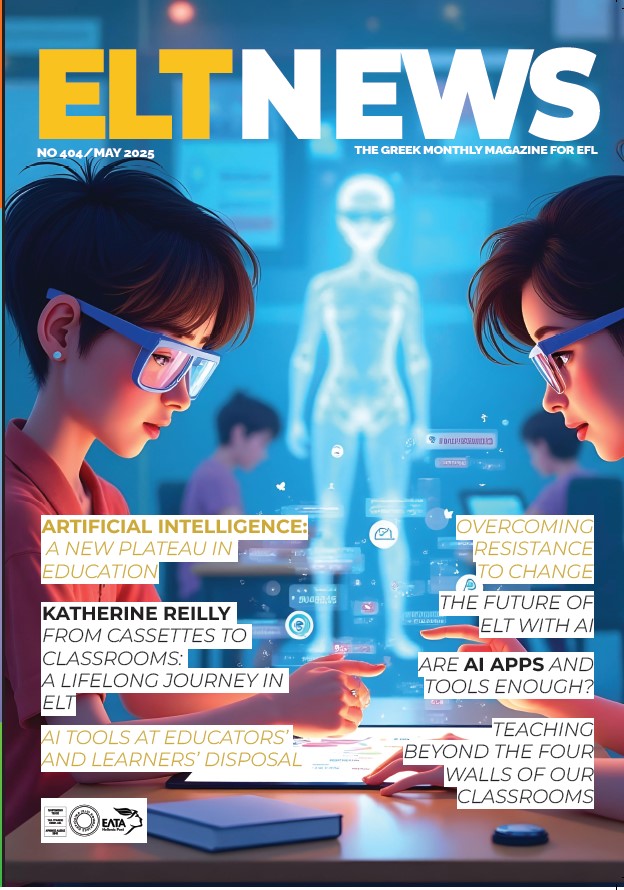AI in ELT – A Helping Hand, Not a Replacement
Nowadays, it’s hard to escape the buzz surrounding artificial intelligence (AI). From music playlists tailored to your taste to smart assistants that finish your sentences, AI is woven into the fabric of everyday life. And now, it’s making its way into our classrooms—especially in English Language Teaching (ELT). What once felt futuristic is now part of our teaching toolkit. Students receive instant feedback on their writing, refine their pronunciation through apps, and even chat with AI-powered bots.
But amid all this progress, a vital question arises: How do we embrace AI in ELT without losing the human touch that makes teaching truly matter?
The Bright Side: Support for Students and Teachers
AI can be a powerful ally for both learners and educators. For students, it offers something we’ve long strived for—personalised learning. With smart algorithms that adapt to individual pace, strengths, and challenges, AI provides tailored feedback, practical tips, and countless practice opportunities—all free from judgment. What once required a private tutor is now available to anyone with a device.
For teachers, AI is like a helpful assistant working behind the scenes. It can assist with lesson planning, monitor student progress, and even handle grading. This frees us to do what we do best: connect with learners, spark curiosity, and nurture growth. Instead of being buried under marking, we can focus on creating meaningful, engaging learning experiences.
The Human Element: Irreplaceable
Yet, it’s important to remember that AI is clever—but it’s not human. It can correct grammar, but it can’t sense the nervous smile of a shy student attempting to speak. It can enhance pronunciation, but it can’t celebrate when a learner bravely uses a new word aloud.
Language learning is deeply emotional, social, and wonderfully unpredictable. Teachers bring empathy, intuition, and connection—qualities no software can truly replicate.
In ELT especially, students do more than just learn English. They build confidence, find their voice, and step into unfamiliar cultural landscapes. A great teacher doesn’t merely explain grammar rules—they create a safe, supportive space where learners are empowered to take risks and grow.
A Tool—Not a Crutch
Of course, AI isn’t without its flaws. Like any tool, it mirrors the data it’s trained on. If that data is biased or limited, it may reinforce stereotypes or ignore the rich diversity of global Englishes. There’s also a risk of overreliance. If learners outsource too much thinking to AI, they miss the deeper learning that comes from struggling with language, making mistakes, and figuring things out.
The solution lies in balance. The future of ELT isn’t about choosing between AI and teachers. It’s about harmonising the two. AI should enhance, not replace, what we do. It can boost efficiency and enrich lessons—but it must never overshadow the human connection at the heart of education.
Moving Forward with Purpose
To make that balance a reality, educators need to be both curious and critical. We should learn how to use AI thoughtfully, understand its limitations, and ensure it aligns with our pedagogical goals. And we must guide our students to do the same: to question, explore, and use AI as a helpful tool—not a shortcut.
Ethical considerations also come into play—student data protection, screen time limits, and equitable access to technology. Just because we can collect data doesn’t mean we should. It’s our responsibility to ensure that the tools we use respect our students’ privacy, well-being, and dignity.
What Does Balance Look Like?
A balanced classroom might use AI to flag grammar issues while still encouraging peer feedback. It could involve brainstorming with an AI chatbot, then working collaboratively to refine and shape the final draft. In these moments, technology supports us—it doesn’t take over.
At the end of the day, AI is just a tool. It’s up to us to use it with intention, creativity, and care. While AI may process language, teachers bring that language to life.
So instead of wondering whether AI will replace us, let’s ask how it can help us grow. As long as we keep people—and our shared humanity—at the heart of education, there’s no limit to what we and our students can achieve.

